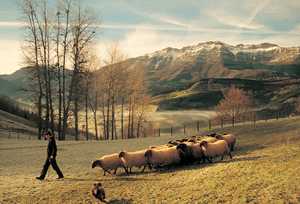gipuzkoakultura.net





Cattle, pigs and sheep are known to have been kept in this area since the Chalcolithic period, and herding was one of the most constant features of life in the late prehistoric period. It required that people follow the herds from place to place and until the castros were built, this nomadic society appears to have had no stable settlements. The people who built the dolmens and funeral mounds were probably wandering tribes ranging over a wide area in search of pasture and food for their livestock, their chief means of subsistence. During the period of Roman occupation, the practice continued alongside the new urban society. Indeed it may well have become more widespread again during the late days of the Empire as a result of the crisis in the cities. The Romans looked down on all pastoral societies and mountain dwellers in general, reflecting attitudes they had inherited from the philosophical and ethnographical notions of their own distant past. They viewed such people as uncivilised, rough and uncouth, and did their best to avoid contact with them. Because they were not tied to fixed settlements, they were held to be uncontrollable and treated as little better than thieves and bandits. Aside from these stereotypes, it is true that many of the inhabitants of Gipuzkoa, like those of other mountainous areas of the Empire, shared little in the high standards of living to be found in Oiasso. Living from herding, and continuing with their time-honoured traditions, they would have had few material goods that might encumber their mobility, their constant changes of dwelling-place and their adaptation to the precarious conditions of the environment. After the collapse of the structures which had sustained Roman order, they simply continued on their way. For those were dependant on the complex Roman organisations, however, even allowing for the transformations and gradual ruralisation of the later centuries, the transition must have been more difficult and painful.